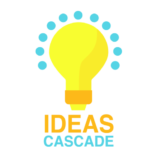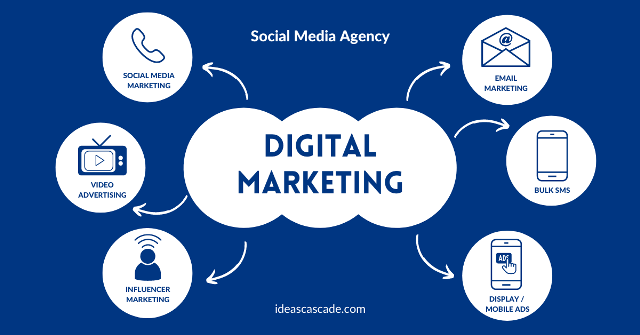Who has seen a Facebook Ad? My bet is everyone unless they’re living under a rock.
Facebook is one of the largest social media platforms used all over the world. From baby boomers to gen Z, there’s hardly any age group that hasn’t heard of or used Facebook at least once in their lifetime.
From keeping up with friends and family to building businesses online, Facebook has revolutionized the way humans interact with each other in every aspect.
With the onset of Facebook ads, digital marketing has become a force to be reckoned with. While the more conventional styles of marketing and advertising such as TV commercials, newspapers, billboards and flyers are now primarily used by big budget companies, small to medium-sized businesses rely more on Facebook ads for better outreach and cost effectiveness.
However, it can be easily argued that the world of digital marketing can be visibly divided into two distinct eras. One before the invention of language model AI tools such as ChatGPT and the other after it.
In a world where AI is free to use, it feels counterproductive not to use it for boosting your business online. It’s like refusing a free opportunity that can potentially make you hundreds, if not thousands of dollars. Is it wise to miss such a chance?
So today, you’ll discover the ways you can harness the power of AI to quickly generate effective Facebook ads.
But first, you need to understand.
Basic Structure Of A Facebook Ad
A Facebook ad is composed of:
- Caption: It’s the top most part of the Facebook ad that you can see above the video or image. The length varies depending upon the level of audience awareness. However, the main purpose is to convince the audience to take the next step.
- Creative: The video or image used in an ad is called the creative.
- Headline: The one line seen below the creative seen next to the link.
- Description: The limited text seen below the headline.
Proven Frameworks For Writing Effective Ads
Writing a Facebook ad is distinctly different from writing a Facebook post. The people who specialize in writing Facebook ads and other forms of copy are called copywriters and the entire field is a part of direct response marketing.
However, there are some proven frameworks that have been used by expert digital marketers and copywriters and you can use these frameworks to write compelling ads.
Three of them are described below:
HVO Framework
This framework is popular because it’s perfect for short form copy such as Facebook and Instagram ads. Here’s the breakdown of HVO framework:
- H: Hook: Hook the audience with an attention grabbing headline, description and first few lines of the caption. The aim is to stop the audience mid-scroll and make them read the entire copy. Bonus points if your ad creative also manages to capture their attentiveness.
- V: Value: Describe the value your product or service provides and how it can transform their lives for the better. It is also useful to describe what your prospects will miss out on if they do not act urgently.
- O: Offer: State your offer and explain how it is a no-brainer and the best solution to their problem followed by a powerful Call-To-Action describing the exact steps they need to take next in order to get this offer.
PAS Framework
This framework is equally good for writing Facebook ads. Here’s how it works:
- P: Problem: State the biggest problem your target audience is facing. This could be the biggest pain point they’re trying to get rid of or the biggest desire they want to sprint towards.
- A: Agitate: Now agitate their pain point. Expand on their problem and explain what else their current problem is making them go through. Some people find this part unethical, particularly if you’re focusing on the pain points rather than building up desire by stating the dream state and additional benefits your target audience can achieve with your product.
- S: Solve: Solve your prospect’s problem by stating your product or services as the obvious solution and end it with a compelling Call-To-Action so that the audience knows what to do next.
AIDA Framework for Raising Awareness
The third framework that’s widely used by expert digital marketers is AIDA:
- A: Attention Get your ideal client’s attention with the help of a hook. The more it’s based on their biggest pain point or deepest desire, the more likely it’s able to grab their attention.
- I : Interest Pique their interest so that they read further. The more time they spend reading your copy, the more likely they are to buy.
- D: Desire Once they’re invested in what you have to say, it’s time to build up some desire. You can do this by highlighting the benefits they’ll get with the help of your product or by using scarcity to create fear of missing out. Or even use both. The choice is yours.
- A: Action Next comes the final step of a powerful Call-To-Action. It’s time to tell your audience the exact step they need to take in order to achieve their dream state.
Effective ChatGPT Prompt To Quickly Write Great Ads
Now comes the juicy part.
Here’s a template you can use for ChatGPT to write Facebook ads using proven frameworks. Just log in to a free ChatGPT account and write:
Hey ChatGPT. You’re now a world class copywriter who’s a pro at writing Facebook ads copy. I want you to write 3 different ads for *product/service* targeting *ideal customer avatar*. Use *name* framework to call out their *biggest pain point/desire*. The copy should be concise, persuasive and *any other adjective you want to use* and it should end with *Call-To-Action*
To elaborate further, here is an example:
Hey ChatGPT. You’re now a world class copywriter who’s a pro at writing Facebook ads copy. I want you to write 3 different ads for organic hair oil targeting middle-aged women living in Canada and suffering from hair loss. Use the AIDA framework to call out their dream to have beautiful, healthy hair. The copy should be concise, persuasive and conversational and it should end with “buy now”.
Now, the purpose of asking for three different versions is because by no means, is ChatGPT the perfect copywriter. However, there is no doubt that it provides an excellent foundation for you to work on. Just keep in mind the proven elements of persuasion and with just a minor tweak, your copy is good to go.
Conclusion
The online marketing space has been changed forever with the invention of language model AI tools such as ChatGPT. However, the output is only as good as the input and it is essential to have basic copywriting knowledge to assess the results generated by ChatGPT.
Knowledge of proven frameworks including HVO, PAS and AIDA can exponentially help in writing effective Facebook ads.
Frequently Asked Questions
What is a copy?
In simplest words, a copy is anything that is written to persuade the audience to take a specific action.
What is included in direct-response copywriting?
It includes social media ads, marketing emails, product descriptions, landing pages, sales pages, video sales letters and website copy.
What is a Call-To-Action?
A Call-To-Action or CTA refers to the next immediate step the marketer wants the audience to take.
Are there other frameworks for writing Facebook ads?
Yes, there are multiple frameworks other than the three mentioned above but these three are commonly used.
Are these frameworks limited to writing Facebook ads only?
No, these frameworks can be used to write any kind of copy.
What is the purpose of a Facebook ad?
The main purpose of a Facebook ad is to make the audience click on the link. The link can then lead to a landing page, sales page, opt-in page, website or blog.
What should be the length of a Facebook ad?
It varies and mostly depends on the purpose of the ad as well as the level of audience awareness.



